betHQ
July 13, 2015
July 13, 2015
The world’s most popular domestic football league, the Premier League, plays in some of England’s grandest stadiums. If you’ve ever wondered where the biggest football stadiums in England are to be found, and which clubs ply their trade in them, then you’ll enjoy our guide to the 10 Biggest Football Stadiums in England:
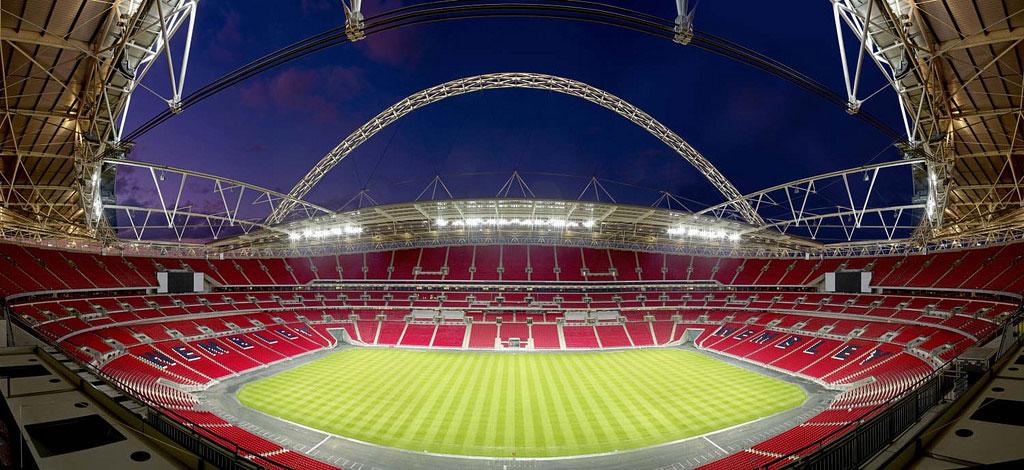
London’s Wembley stadium stands aloof from the partisan rivalries that fuel English football. Instead, the ultra-modern successor to the venerable Empire Stadium is used as a neutral venue for hosting cup finals, relegation battles and matches featuring the England national team. The stadium can accommodate 90,000 spectators, and can be instantly recognised – courtesy of the massive suspension arch which soars over Wembley’s hallowed turf.
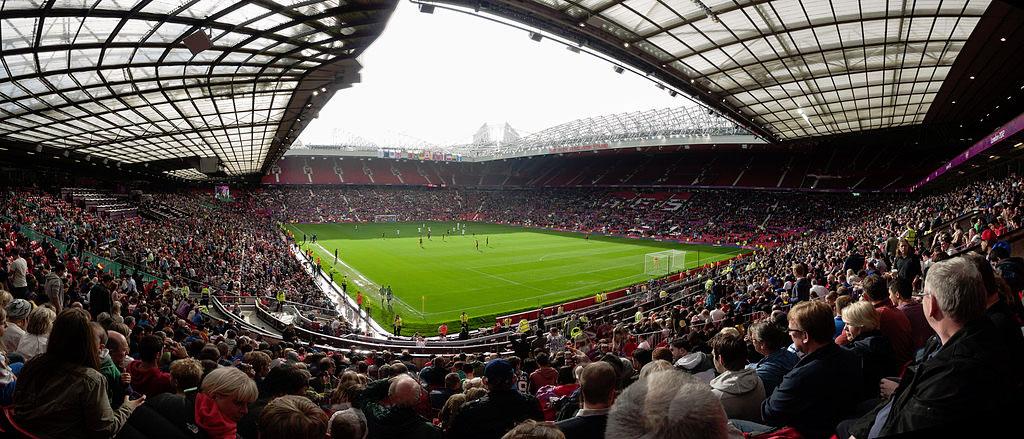
It is perhaps fitting that the most successful British football club of the new Millennium plays their football in the largest club-owned stadium in England. A visit to Old Trafford is regarded as a football pilgrimage by Manchester United fans around the world, and the stadium is frequently packed to its 75,700 capacity by a sea of red-shirted fans.

Tottenham Hotspur’s White Hart Lane ground was completely demolished to make place for their new stadium. The new stadium is a state-of-the-art facility, and the first in the world to feature a dividing, retractable football pitch, covering a synthetic turf pitch. With a capacity of 62,303 spectators it is also the largest club football stadium in London.
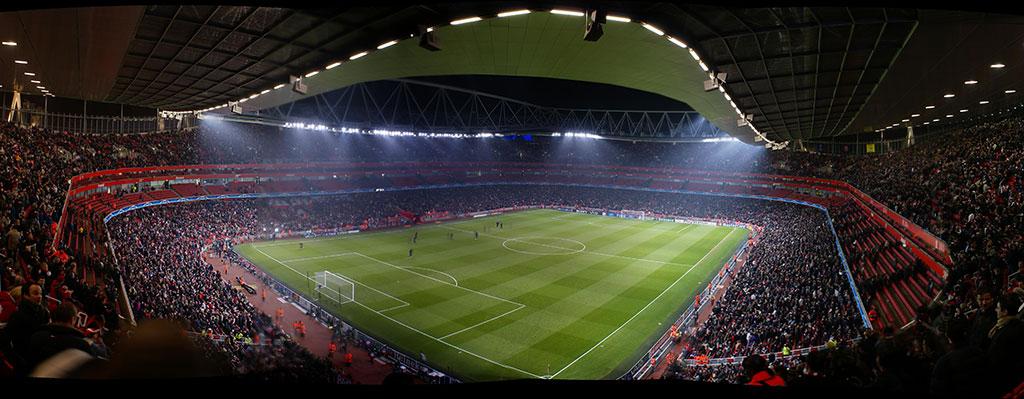
The Emirates Stadium in London is one of the more recent additions to England’s football stadiums. The 60,704 capacity stadium replaced Arsenal’s former home at Highbury, and was built after a decade of unprecedented success by the Gunners. Notable features of the stadium include the joint largest pitch in England, and special design features which are used to accentuate natural lighting in the stadium.
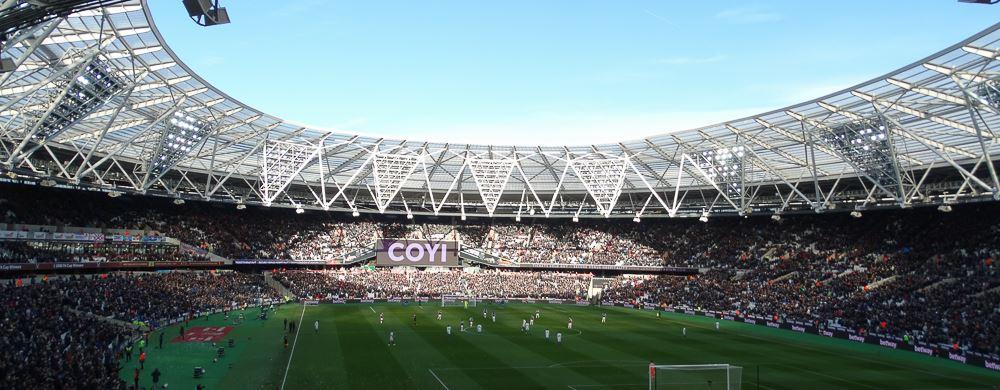
West Ham United became the second football club in England to take over and re-purpose an athletics stadium when they moved into the London Stadium in 2016. While the former Olympic stadium can accommodate up to 66,000 spectators its capacity is limited to 60,000 for football matches. In its short time as the home of West Ham United the stadium has set the scene for some of the club’s most infamous scenes of hooliganism and crowd violence.

Whilst it may not be recognised as one of England’s most atmospheric football grounds, the City of Manchester Stadium is one of the country’s largest football stadiums. The 55,000 capacity stadium was originally constructed to host the 2002 Commonwealth Games, before being converted to a football stadium in 2003 – the same year in which Manchester City secured the City of Manchester Stadium as a home ground.
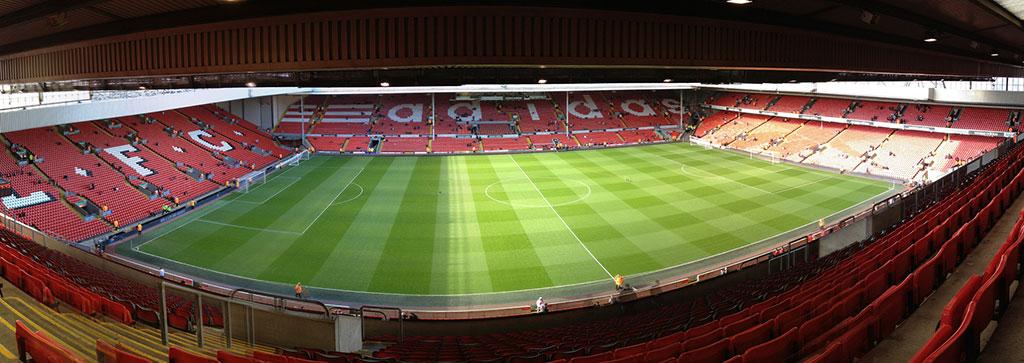
Liverpool is home to one of the oldest and most regal football stadiums in England. The 54,000 capacity stadium features grandstands that have become the stuff of football folklore, such as the intimidating ‘Kop’, which at one point could accommodate 30,000 spectators. After abandoning plans to build a new Liverpool stadium at Stanley Park, the club owners launched a redevelopment project that will see Anfield’s capacity increased to 61,000 seats.

The home of Newcastle United is the largest stadium in the North-East of England. The 52,400 capacity ground is situated in the middle of the city of Newcastle, and its cantilevered roof is visible from various vantage points in the city. St James’s Park is instantly recognisable by its asymmetrical stands – the product of attempts to expand capacity whilst avoiding conflicts with nearby residents and the city council.

With a capacity of 49,000, Sunderland’s Stadium of Light is the fifth largest football stadium in England. The ground boasts ultra-modern facilities after the most recent round of renovations, which was concluded in 2000. Today the Stadium of Light is one the five elite football stadiums in England which carry a five star UEFA rating.

Villa Park in Birmingham, England, is one of the oldest football grounds still in use in the country. The 42,500 capacity ground is one of the five stadiums in England to boast a 5 star UEFA ranking and has hosted numerous international matches. Aston Villa Football Club is expected to expand the stadium capacity to 50,000 within the next decade.
When it comes to battles of the bookmaker heavyweights you won’t find a more […]
Rebel Betting is one of the oldest and best-known names in sports investment software, […]
Steeplechase horse racing is believed to have originated in Ireland in the 18th century. Huntsmen […]